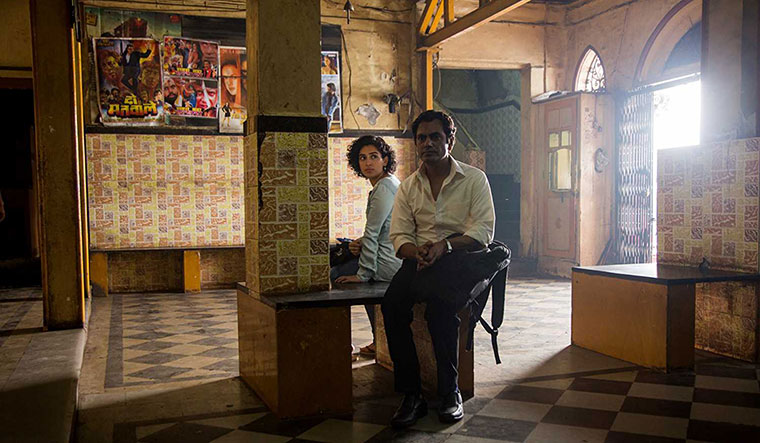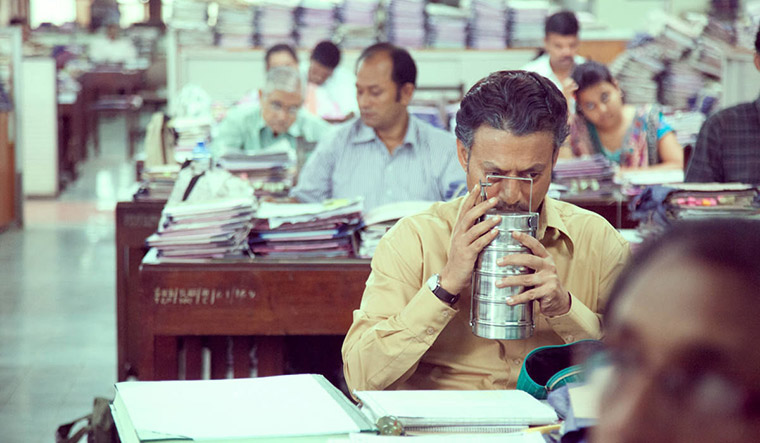When filmmaker Ritesh Batra started writing Photograph, his fourth film, in 2013, the biggest challenge was to make it believable. The story is about a unique bond between a photographer at the Gateway of India, Rafi (Nawazuddin Siddiqui), and Miloni (Sanya Malhotra), a middle-class Gujarati. Rafi, who is originally from Uttar Pradesh, is being pressured to get married by his grandmother. And, after he clicks a picture of Miloni, he convinces the reticent girl to pose as his fiancée.
It could be described as a rich girl-meets-poor boy love story. “We have seen many of those in India—a motor mechanic falling for a rich saheb’s daughter,” says Batra, 38. It is not by chance then that Teesri Manzil becomes a crucial part of the film “A lot of drama followed in those films, from kidnapping to fight scenes. But, there was never an attempt to make it believable,” he says.
And, if it were not believable, the film would have lasted for only seven minutes, he says. “To really sell this story, we needed to bring that curiosity in both the characters for the life of the other character,” says Batra. “In our country, or perhaps in any place in the world, bankers and plumbers are never going to grab a drink together. That is just a fact. Maybe in America it is possible because a white-collar kid and a blue-collar kid went to the same school. But if you think of the United Kingdom, never! It is such a classist society. In our country, neither. We, too, are a very classist society.” Batra does not blink an eye before saying this. “The relationship that you see in the movie would never happen in real life, anywhere in the world,” he says.
And, that is why he says it was a hard movie to write. “It was difficult to write because these two characters—Miloni and Rafi—have never spent time together,” says Batra. “[In a normal circumstance], the extent of their conversation would be limited to ‘bhaiya, kitna hua?’ and stuff. So, to sustain a whole film, beyond the contrivance of an excuse for them to meet, was the tough part.”
But, something strikes in the film. Like his debut The Lunchbox, Photograph, too, tugs at the heartstrings. Even if we do not mull over the romance of it, there is a lot to absorb—from Miloni’s rediscovery of herself through a picture that a photographer at the Gateway of India takes to Rafi’s trust in Miloni to introduce her to his grandmother.
If Batra’s films were to be described in a line, it would be thus: stories of ordinary lives in remarkable situations. In the much-appreciated The Lunchbox, a homemaker strikes a friendship with an office-goer because of an unlikely mistake by a tiffin carrier service. In his next two films (both book adaptations)—The Sense Of An Ending, about the reuniting of two lovers in old age, and Our Souls At Night, about a widow and a widower finding company in each other—two people come together because of unlikely situations. Probably, also because they have been lonely enough to get on to the journey of exploring something new.
Batra would not call his characters lonely. It is more of a longing, he reasons. “Being lonely means nothing. The best actor in the world would not be able to play lonely. You cannot ask the actors to sit and be lonely because that is nothing,” he says. “But, longing [can be worked]—something they don’t have, or wanting something, or to be somebody else, that is pretty universal.”
Nawazuddin, who collaborated with Batra in The Lunchbox as well, had told THE WEEK in an earlier interview about Batra’s ability to make his characters life-like. Sanya, on the other hand, was so consumed by Miloni, she found it difficult to come out of it. “I had to make efforts to meet people to get out of that zone,” she says.
Nawazuddin believes that Batra’s gaze towards his characters is emotional and he infuses life into each character he develops. “That is what happens in movies,” says Batra, playing down the compliment. “I don’t think I have been successful all the time.” For that to happen, a lot of things have to come together. “First, the director and the actor have to look eye to eye, and agree on the character’s arc,” he says. “And, the people have to be willing to come along for this journey with you.” He also talks about doing 30 takes, and then turns to me and asks, “Is that a lot?” Perhaps, not! He has an explanation for it: after doing so many takes, the line between the actor and character blurs; what is on screen is real.
Batra, now settled in New York, has not had an easy journey. He is not from a film family—his father was in the merchant navy, and his mother is a homemaker. “And even though I grew up in Mumbai, I know how difficult it is to break into [the industry], and to survive it is even harder,” he says, recalling a time when “I was alone with my script (The Lunchbox) for four years”.
Has it got easier now? “Every film is such a unique piece,” says Batra. “It doesn’t get easier. The process of writing and making and shooting—the things that I love doing—do not get easier. Also, the process of raising money to make a movie that you want to make has not got easier, either.” He recalls how once he sacrificed his independence to make a movie. He would not name the film, but says, “Even though I enjoyed working with the actors, I did not enjoy working on it. And, I do not think the movie is great.”
But, Batra has let bygones be bygones and is focusing on new avenues. Next for him is a series for a leading streaming platform and a project for the stage in New York. “It is not something that I have done before,” he says, “so it is quite exciting.”




